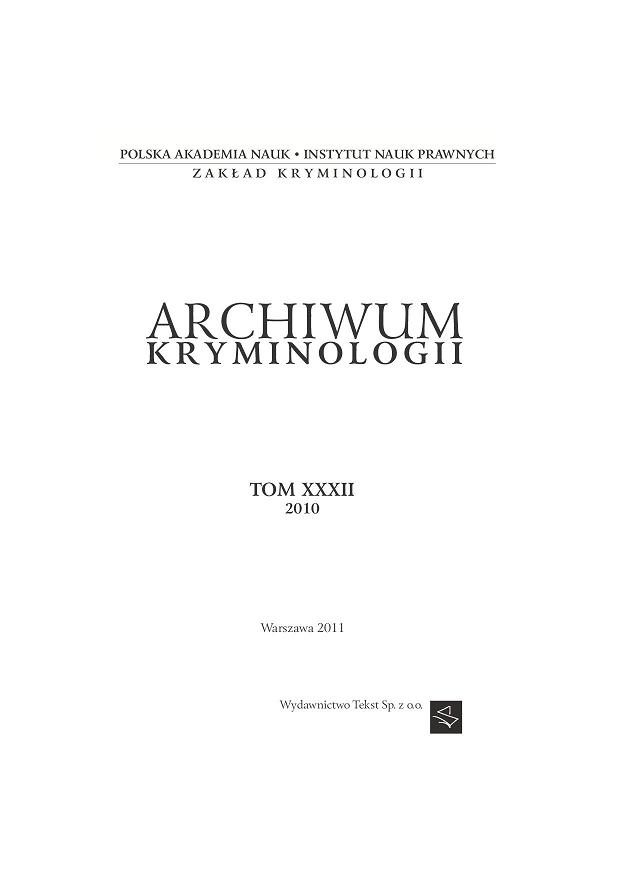Środek karny zakazu wstępu na imprezę masową w systemie prawa karnego
The penal measure of mass event entry ban in the system of criminal law
Author(s): Andrzej Sakowicz, Mirosława MeleziniSubject(s): Law, Constitution, Jurisprudence
Published by: Instytut Nauk Prawnych PAN
Keywords: STADIUM HOOLIGANISM; DEVIANT BEHAVIOUR; CRIMINALIZATION; CRIMINAL CONTROL;
Summary/Abstract: The publication discusses the nature, premises, and methods of sentencing a penal measure consisting in prohibition of entry to mass events. The first part shows legal solutions accepted in the European Convention on Spectator Violence and Misbehaviour at Sports Events and in particular at Football Matches accepted on 19 August 1985 by Council of Europe. It is recognised at one of the most important international documents providing for the fight with stadium hooliganism. Although the Convention’s aim is to prevent and control incidents by football spectators, provisions of the Convention apply also to other disciplines which might posit the risk of acts of violence and incidents by spectators (article 1 paragraph 12 of the Convention). Subsequently, there follows an analysis of legal solutions accepted in the current Act of 20 march 2009 on Mass Events Safety and the former Act of 22 January 1997 on Mass Events Safety. In particular, the focus was placed on the evolution of the prohibition of entry to a mass event and the definition of a legal mass event which at present is no longer based on the number of participants predicted by the organiser but on the number of places made available by the organiser. It is a result of common malpractice practice of organisers who used to omit the requirements by declaring less people than were actually expected. 2. Second part of the publication presents statistical data concerning contraventions related to mass sport events between 1999 and 2009 in Poland. The data show that there is a decreasing tendency in mass contraventions and hooligan incidents. At the same time, the data bring the conclusion that most hooligan incidents were committed during mass events. This may prove that objects where such events are organised are still ill-equipped but also that the organisers fail to observe their duties, imposed on them by the Act on Mass Events Safety. This part of publication also drafts a profile of the perpetrators of hooligan events. The study shows they are unmarried males between 15 and 25 with primary or secondary education and without a previous criminal record. 3. Part three of the publication is an analysis of normative solutions of the penal measure consisting in prohibition of entry to mass events. It includes provisions of Criminal Code, Petty Offences Code and Act of 20 march 2009 on Mass Events Safety. The analysis brings a conclusion that introduction of mass entry event ban served the purpose of increasing the safety of mass events and excluding persons who posit a risk to said safety. Thus, introduction of such legal solution to Polish law should be undisputable. Doubts can be raised only if particular solutions are examined, for instance the interpretation of “personal appearance” in a police station during a mass event.
Journal: Archiwum Kryminologii
- Issue Year: 2010
- Issue No: XXXII
- Page Range: 249-274
- Page Count: 26
- Language: Polish

